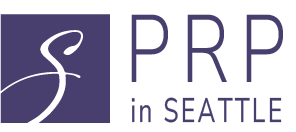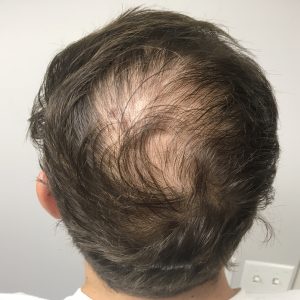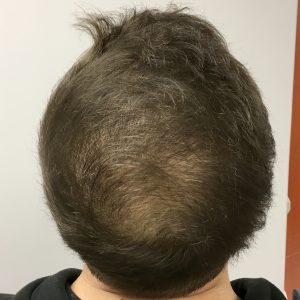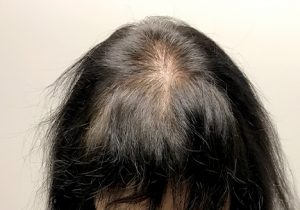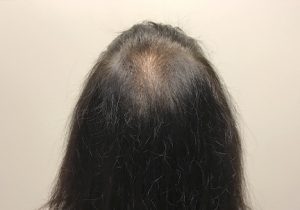Platelet Rich Fibrin Hair Restoration Seattle | PRF Hair Restoration Seattle
Non-surgical hair loss treatments have grown in popularity both over-the-counter and as a prescription. Since the days when only a hair transplant could treat hair loss, there are several effective and safe non-surgical options. From topical creams to in-office procedures, finding the right procedure for you can be difficult without professional help. The hair restoration experts at PRP In Seattle can help you navigate finding the right hair loss treatment for you. PRP In Seattle also offers the best PRF hair restoration Seattle provides.
Overview: PRF For Hair
PRF stands for platelet rich fibrin which is considered the next generation of platelet rich plasma. It is extracted in the same way and spun in a centrifuge to separate the platelet rich fibrin from the rest of the components of the blood. Following the same protocol as PRP hair restoration, the PRF is then injected into the areas of hair loss.
Platelet rich fibrin does not contain an anticoagulant as PRP prepared for hair treatment does. This means that it better adheres to the scalp and hair follicles and builds a stronger support system. These clotting factors make PRF extremely effective for certain medical and cosmetic procedures such as non-surgical hair restoration in Seattle.
Benefits & Risks
PRF hair restoration offers many benefits to patients experiencing the early stages of genetic hair loss. Some of the benefits and advantages include:
- Slow hair thinning and loss
- Helps restore lost hair
- Enhances the body’s natural healing process
- Helps repair damaged and dormant hair follicles
- Can help treat male and female pattern baldness
- Contains natural stem cells (PRP does not)
- More platelets and growth factors than PRP (up to ten times the amount of normal blood)
- Less diffusion for more effective use by the body
- Does not contain any additives
- Requires less blood
- May provide longer lasting results than other non-surgical hair restoration methods
- Little to no pain
- Low risk
- Allergic reactions nearly impossible
- No incisions
- Non-surgical and non-invasive
- Performed by a qualified surgeon or aesthetic physician who specializes in PRP
When it comes to a medical procedure, PRF hair restoration does not come with many risks. Most of the risks are standard with injection procedures. Major complications following PRF injections are extremely rare. However, it is also important to understand the possible risks, which can include:
- Infection
- Scarring
- Prolonged side effects
- Subpar results
If you are prone to keloid or hypertrophic scars, let your provider know as this can impact your treatment. People who have blood disorders, are taking blood thinners, or have a major condition may not be candidates for PRF hair restoration due to increased risks.
Non-Surgical Hair Restoration Methods
Non-surgical hair restoration techniques are relatively new. The first topical hair loss treatment came out in the 1980s with several other similar products following. Lately, non-surgical hair restoration has focused on lasers, supplements, and injections. Some of the other non-surgical options that can be used in conjunction with or instead of PRF hair restoration include:
- Topical medications
- Supplements
- Specialized shampoo/conditioner
- Platelet rich plasma
- Exosomes
- Low level laser therapy
- Treating underlying causes if possible
PRP vs. PRF: What Is The Difference?
Platelet rich plasma and platelet rich fibrin both come from the patient’s blood and contain high amounts of natural growth factors. However, there are subtle variances that make a major difference in the way each treats hair loss. The table below details some of these differences.
| PRF | PRP |
|
|
Along with these differences, PRF and PRP are injected in almost the same way, both require a blood draw, and spinning in a centrifuge. They also have many of the same uses and indications. Platelet rich fibrin is showing better results for most applications than PRP, but PRP is still an effective hair loss treatment.
Non-Surgical PRF Hair Restoration From Start To Finish
Consultation
Before undergoing PRF hair loss treatment, you will meet with a provider at PRP In Seattle. At this consultation, you will discuss your expectations for treatment, medical history, and the history of your hair loss. Your provider may also ask about other treatments you have tried and your lifestyle. Finally, your provider may examine your scalp and hair loss to determine if you are a good candidate for the procedure.
If you are, they can sometimes proceed with the treatment immediately. Otherwise, you can proceed with scheduling your appointments. If you are not a good candidate, they may recommend or prescribe other manners of hair loss treatment. Before leaving, you will receive a personalized price quote and financing information.
Treatment
To begin your PRF hair treatment, your provider will take a blood sample. Once drawn, they will place it into a centrifuge and let it spin on the settings for PRF. From there, they will prepare you. This will include disinfecting the scalp and injection sites as well as applying a topical anesthetic. While your provider will use an extremely thin needle, they will still numb the scalp.
When the PRF finishes spinning, you will likely be numb enough to begin treatment. On average, there are about sixty to one hundred injections per treatment session. However, patients tend to remain fairly comfortable during treatment and discomfort is manageable. The injections take around an hour to complete.
Aftercare
On the day of the procedure and for a few days afterward, you may feel some tightness, itchiness, and pain. Tylenol can usually handle this. Your provider may give some instructions to follow after your procedure. These instructions may include:
- Do not wash your hair or get it wet for about three to four days
- Avoid sweating or strenuous exercise for a few days
- Keep the treatment areas covered when in the sun
- Avoid touching the area unnecessarily
- Do not smoke or drink for days following the procedure
- Limit use of NSAIDs (okay to take, but may cause or worsen bruising)
- Do not use hair products that you have not discussed with your provider
- Limit and/or avoid caffeine
- Increase water intake
Frequently Asked Questions
Is PRF Permanent?
There is no non-surgical hair restoration procedure that can permanently restore hair, especially if there are genetic factors at play. However, it can slow the progression of hair loss. With regular maintenance treatments following your initial round of PRF injections, you can promote results that last several years and potentially decades.
Some patients choose to use PRF hair restoration injections in conjunction with other therapies such as hair transplant surgery, laser therapy, and topical medications. This is certainly doable in most situations and can help improve and prolong hair growth.
How Long Does It Take To See Results?
Patients tend to start seeing results after their second, third, or fourth treatment. This roughly correlates to about two to four months following treatment. Some may see it sooner and for others, it may take longer. It is dependent on several factors, including how well you adhere to aftercare protocols, your biology, the cause of the hair loss, and even environmental factors. The average amount of time it takes to see results is about three to four months.
What Is Fibrin?
Fibrin is a protein found in the blood that is a major component of blood clots. This protein is found in long chains and is insoluble. This means it cannot be dissolved in water and makes it a sturdy, useful protein for clotting. In turn, when injected into the scalp, this works to build scaffolding in the hair follicles and skin to promote increased and better quality hair growth.
Is Platelet Rich Fibrin Hair Restoration Safe?
PRF hair restoration is a safe procedure that carries few risks. Since all components of the treatment except for the needle come from the patient’s body, an allergic reaction is nearly impossible. While side effects such as infection are possible, they are rare and treatable.
What Are The Medical Applications?
The first uses of platelet rich fibrin were in dentistry to aid in wound healing following surgeries and major procedures. PRF is also used in several other specialties such as sports medicine, dermatology, urology, and pain management. Similar to PRP, it can be used to aid in the healing of soft tissue injuries and surgical incisions.
The Best PRF Hair Restoration In Seattle
PRP In Seattle is a leading medical spa specializing in regenerative non-surgical medical procedures such as PRP and PRF injections. Performed by plastic surgeons and aesthetic physicians who have undergone training in PRP and PRF procedures, they customize each procedure to the patient and their needs. PRP In Seattle provides the best PRF hair restoration Seattle offers.
With the top PRF expertise in Seattle, the providers at PRP In Seattle continually refine their knowledge of this quickly evolving field. PRF is one example of PRP In Seattle becoming one of the first in the area to offer such procedures.
To learn more and schedule a consultation, call us at 206-279-2112. You can also reach out online via chat or contact form.
